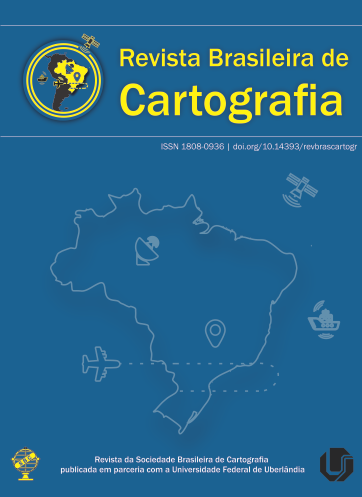The Effect of Hydrological Load and its Influence on the Displacement and Velocities of GNSS Stations in the Brazilian Amazon Basin
Main Article Content
Abstract
Crustal deformation and Geodynamic phenomena alter the positions of points on the Earth's surface. Some of these, such as the hydrological load (water storage and hydrological load), are expressive in specific regions, such as the Amazon basin, becoming to consist of yourself of a local characteristic. Its effect is manifested as temporal viscoelastic deformations on the Earth's surface and are not considered in the PPP (Precise Point Positioning) modeling. In this sense, the present work aims to investigate the influence of the hydrological load in the displacement of nine stations of the RBMC (AMBC, AMCO, AMHA, AMMU, AMTE, AMUA, ITAM, NAUS and PAIT) located in the Amazon Basin, using positional time series generated in the IBGE-PPP. The series of vertical components (Δu) presented greater amplitudes when compared to the series of the north (Δn) and east (Δe) components. The NAUS station presented the highest average amplitude for the Δu series (0.073 m) and the maximum amplitude in 2012 (0.084 m), justified by the largest historical flood. The Δn series presented results similar to the Δu series, but with smaller amplitudes. The NAUS station achieved maximum amplitude (0.023 m) in 2012 and 2015 for the Δn series, justified by the floods, and an average amplitude of 0.020 m. In relation to the Δe series, the largest mean amplitude (0.016 m) was obtained by AMBC. After proving the effects of the hydrological load on the positional components, the velocities derived from the time series and VEMOS2009 were compared, in which Vn, Ve, and Vu presented discrepancies between -0,0001 and 0,0014 m, -0,0021 and 0.0017, and -0.0027 and 0.0084 respectively.
Downloads
Metrics
Article Details
Authors who publish in this journal agree to the following terms:
- Authors retain copyright and grant the journal right of first publication with the work simultaneously licensed under a Creative Commons Attribution License that allows others to share the work with an acknowledgment of the work's authorship and initial publication in this journal.
- Authors can enter into separate, additional contractual arrangements for the non-exclusive distribution of the journal's published version of the work (e.g., post it to an institutional repository or publish it in a book), with an acknowledgment of its initial publication in this journal.
- Authors are permitted and encouraged to post their work online (e.g., in institutional repositories or on their website) before and during the submission process, as it can lead to productive exchanges, as well as earlier and greater citation of published work (see "The Effect of Open Access").





